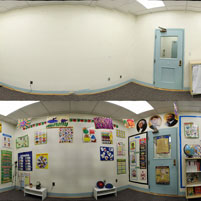Three Research-Backed Tips for Back-to-School
By Shilo Rea

With more than 205 trillion ways to teach and learn, it is easy to understand why going back to school can be overwhelming for students at any level — and their instructors. Here are three research-backed tips to help start the school year off on the right foot.
1. Learning Is Not a Spectator Sport
Free — or very inexpensive — online courses have become quite a trend in education. Massive Open Online Course (MOOC) providers currently offer thousands of courses and have enticed millions of students to enroll. The emphasis in MOOCs is often on lecture videos that students watch and learn from.
However, a Carnegie Mellon University study shows that this central approach of MOOCs — having students watch to learn — is ineffective. Instead, the emphasis on interactive activities as advocated by the Simon Initiative helps students learn about six times more.
Named for the late Nobel and Turing laureate Herbert Simon, the Simon Initiative aims to measurably improve student learning outcomes by harnessing a learning engineering ecosystem that has developed over several decades at CMU. The Simon Initiative approach uses CMU’s Open Learning Initiative (OLI) courses, which are built to mimic intelligent tutors in order to provide adaptive feedback and hints during learning by doing.
“Learning by doing gives students deliberative practice opportunities to address a course’s objectives,” said Ken Koedinger, professor of human-computer interaction and psychology and co-coordinator of the Simon Initiative. “With OLI, students get immediate feedback. If they do not master a concept, they have to go back to re-watch or re-read and then demonstrate they have learned before they are able to move on.”
2. Classroom Decorations Distract Students

Maps, number lines, shapes, artwork and other materials tend to cover elementary classroom walls. However, CMU research indicates that too much of a good thing may end up disrupting attention and learning in young children.
The team looked at whether classroom displays affected children's ability to maintain focus during instruction and to learn the lesson content. They found that children in highly decorated classrooms were more distracted, spent more time off-task and demonstrated smaller learning gains than when the decorations were removed.
"Young children spend a lot of time — usually the whole day — in the same classroom, and we have shown that a classroom's visual environment can affect how much children learn," said Anna Fisher, associate professor of psychology in the Dietrich College of Humanities and Social Sciences.
Learn more, including the research team’s recommendations
3. Understanding Fractions and Long Division Is Key
 From factory workers to Wall Street bankers, a reasonable proficiency in math is a crucial requirement for most well-paying jobs in a modern economy. Yet, over the past several decades, mathematics achievement of U.S. high school students has remained stagnant — and significantly behind many other countries, including China, Japan, Finland, the Netherlands and Canada.
From factory workers to Wall Street bankers, a reasonable proficiency in math is a crucial requirement for most well-paying jobs in a modern economy. Yet, over the past several decades, mathematics achievement of U.S. high school students has remained stagnant — and significantly behind many other countries, including China, Japan, Finland, the Netherlands and Canada.
A research team led by CMU’s Robert Siegler has identified a major source of the gap - U.S. students' inadequate knowledge of fractions and division.
Although fractions and division are taught in elementary school, even many college students have poor knowledge of them. They found that fifth graders' understanding of fractions and division predicted high school students' knowledge of algebra and overall math achievement.
"We suspected that early knowledge in these areas was absolutely crucial to later learning of more advanced mathematics, but did not have any evidence until now," said Siegler, the Teresa Heinz Professor of Cognitive Psychology. "The clear message is that we need to improve instruction in long division and fractions, which will require helping teachers to gain a deeper understanding of the concepts that underlie these mathematical operations. At present, many teachers lack this understanding. Because mastery of fractions, ratios and proportions is necessary in a high percentage of contemporary occupations, we need to start making these improvements now."
Related Articles:
Taming Instructional Complexity (with video)
Learning is Not a Spectator Sport
Heavily Decorated Classrooms Disrupt Attention and Learning in Young Children (with video)
Knowledge of Fractions and Long Division Predicts Long-Term Math Success (with video)